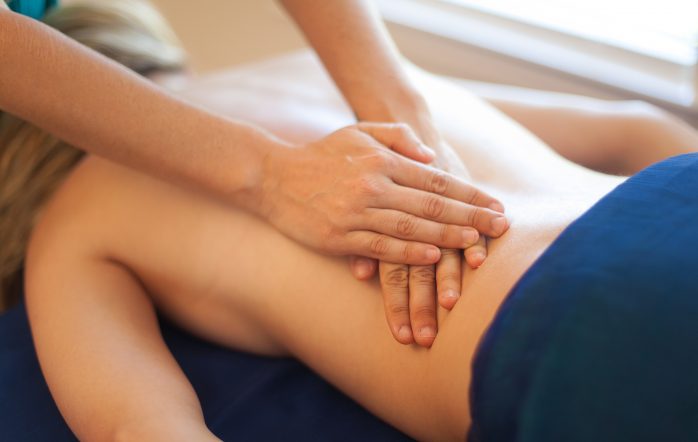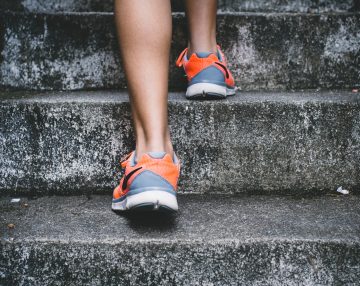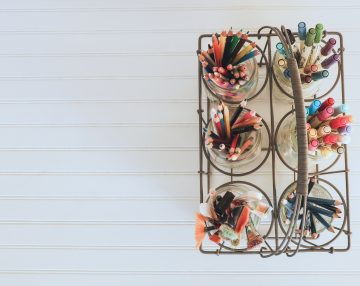It’s an interesting predicament, isn’t it? Few of us are born with massaging skills, yet virtually all of us love to give and receive good massages. Because of the many benefits of massage—relieving pain and reducing stress—learning to give a better massage to yourself or your partner can be profound, and everyone can do it.
- Use your body weight so you don’t get tired.
One of the biggest complaints is that partners only massage each other for a few minutes and stop because their hands or arms hurt – it most likely has to do with your positioning. Good massage is less about your grip and more about your stance and the use of gravity.
So rather than trying to massage your partner when they’re standing next to you or sitting beside you on the couch, have them sit on the floor on a pillow while you sit on the couch or in a chair while you stand behind them. They could also lie on the floor on some blankets or a mat, but when sitting they can get some extra stretching in by leaning forward as you massage their back. - Don’t forget the oil.
To prevent uncomfortable friction and help your hands glide easily, use some lotion or a little bit of olive oil when massaging. Don’t just pour it on their back, though, like they’re a salad. Use the oil on your own hands and warm them up. - Do no harm.
Avoid pinching or grabbing muscles. You can prevent this by keeping your fingers together and using your whole hand in the massage. Think of it like working with clay, you need to spend some time softening it first. Likewise with a massage, use soft strokes to warm up the muscles before you try to knead them. - How to massage the neck and shoulders
Make a soft (loose) fist and use the base of your hand to apply pressure on the left shoulder, running your hand up the side of the neck until you get to the base of the skull, then go back down. Without breaking contact, repeat on the other side. Do this a couple of times. - How to massage the back
With the base of your hand and the pads of your thumbs, rub circles up and down along the spine to warm up the muscles. Be careful not to press on the spine itself.
They can lean forward as you move down. Press your hands into the back and lean in slowly to apply pressure with your body weight.
Finally, use a kneading motion—using your whole hand to gently squeeze and knead the muscles along the spine.
- Think broad.
You can give a more comfortable massage by using broad strokes, kneading large sections of the muscle instead of targeting smaller areas, and using the heel of your hand or a loose fist. Even knots and trigger points can be worked on broadly (and often less painfully) just by loosening the whole muscle around the knots. This is very important to remember if your subject has fibromyalgia, since accidentally hitting a trigger point can result in hours or even days of pain. - Avoid the thumbs.
I’m not saying don’t use them, but don’t make them your mainstay either. The best way to injure yourself during a massage is to overwork your thumbs. You’ll get hand cramps galore, and get tired quickly. Instead of thumbs, try using the heel of your hand. Also keep your wrists straight and use your whole arm to move, using your weight to add pressure. - Relaaaaax. Not just your subject, YOU. If your hands are tense, the massage will feel like it was done with rocks. Use loose fists (don’t even bother to curl the fingers), fluid movements, slow strokes and circles. Don’t overthink or analyze, put all your focus in the moment and FEEL the muscles under the skin. Giving a massage can be a very zen experience, and the more relaxed and in tune you are, the better the massage will feel to the person receiving it.
You can also check out this video for additional tips:





Join the Conversation
건전마사지
Greetings! This is my 1st comment here so I just wanted
to give a quick shout out and tell you I truly enjoy reading your posts.
Can you suggest any other blogs/websites/forums that deal with the same topics?
Thanks for your time!
선릉스웨디시마사지
Wohh exactly what I was searching for, thank you for posting.